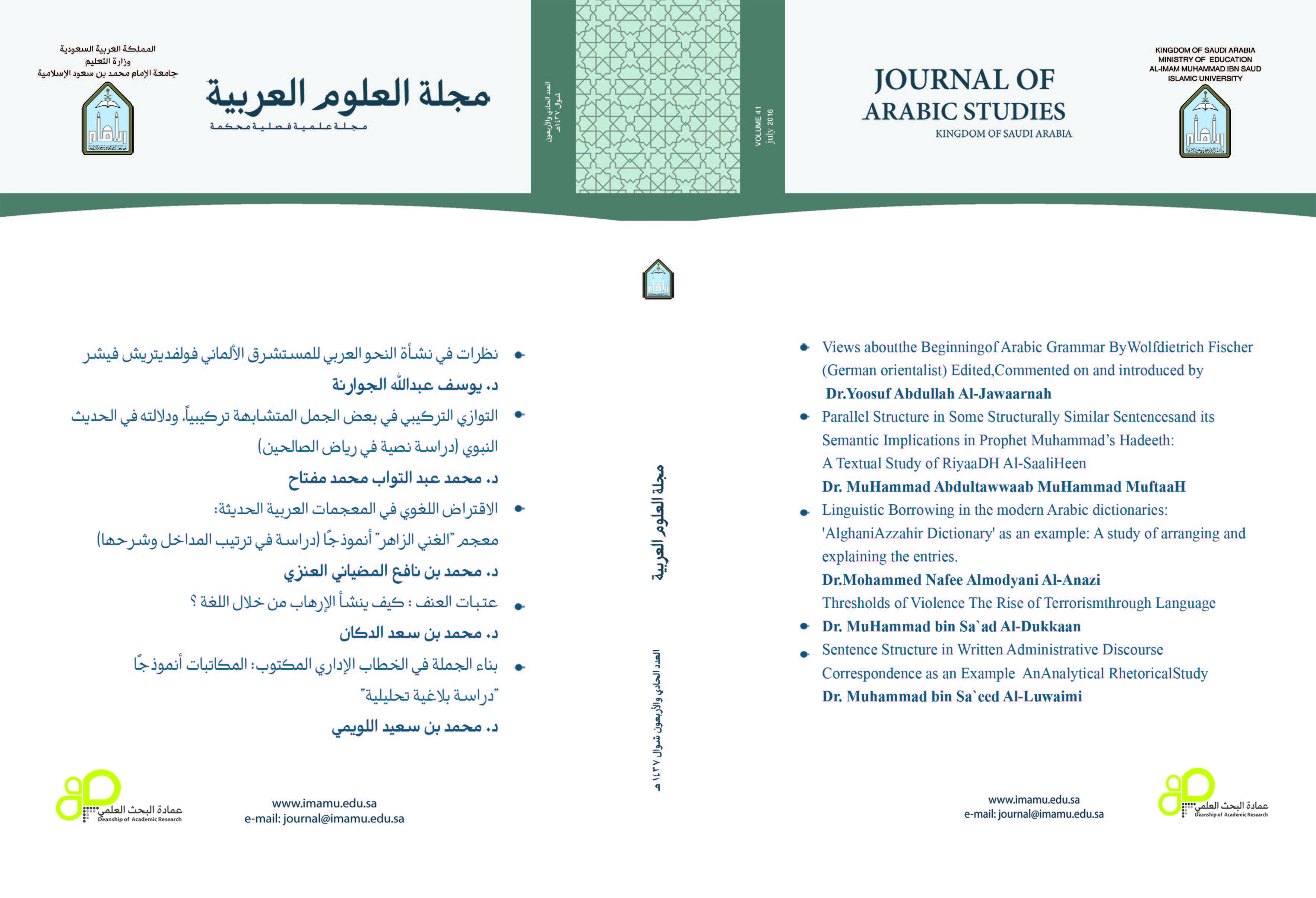Linguistic Borrowing in the modern Arabic dictionaries: 'Alghani Azzahir Dictionary' as an example: A study of arranging and explaining the entries.
Abstract
This research focuses on Linguistic borrowing in the modern Arabic dictionaries through the dictionary of 'AlghaniAzzahir' by Dr. Abdulgani Abi Alazm, published by the Morocan Alghani publishing co. in 2013, and sponsored by Mohamed Ibn Rashid Al-Maktoom institution.
This research includes an introduction, two body chapters, and conclusion;
Introduction: The introduction focuses on the concept of linguistic borrowing, factors helping linguistic borrowing to appear, levels of borrowing, and the openness of Arabic towards other Semitic or other non-Semitic Endo-European languages. This exposure of Arabic to other languages enriches the Arabic language, and helps non-Arabic speakers to learn Arabic. The introduction also includes brief description of the dictionary, and the reasons for selecting this dictionary as a sample.
First chapter: Arranging the borrowed words in the dictionary:
This chapter focuses on some aspects should be considered in arranging the borrowed words in the dictionary, and some of the misconception of arranging the borrowed words such as relating some of the borrowed words to unrelated or untrue roots where the author of the dictionary believes. The author does not differentiate between major and sub-major in the entries, especially in dealing with simple or compound words in the dictionary. Also, there is no commitment in the alphabetical order in some of the borrowed entries.
Second chapter: Defining or explaining some of the borrowed word in the dictionary.
This chapter, briefly, includes mentioning some of the difficulties the authors of dictionaries in treating the meaning of the words in general, and the meanings of the borrowed words in particular. This chapter, also, deals with the drawbacks of defining some of the borrowed word in the dictionary, such as not giving specific definition of certain entries showing how they semantically differ from related words. The author uses generalization where the specification is needed, and sometimes the author uses one semantic meaning where it should be more. In some entries, the author ignores the meaning of the Arabic terminology compared with the borrowed terminology. The author, sometimes, does not specify the etymology and the meaning of the borrowed terms in their original language. The author of the dictionary, also, does not follow a systematic methodology in using some of the signs showing the roots of the borrowed words. Instead, he (the author) uses some vague and short signs or uses words in different meaning of the borrowed words.
Conclusion: concludes the important results of this study.




